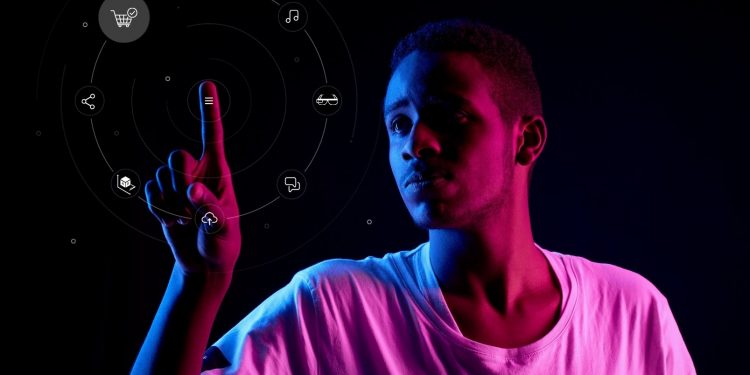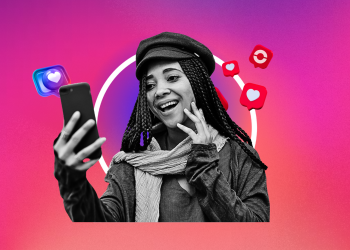Augmented reality in marketing has resulted in some amazing works recently. A new form of interactive technology, augmented reality (AR) has emerged as a way to stitch together virtual elements and the physical environment – providing innovative tools for marketers to engage with consumers for commercial purposes.
Although AR applications date back to the 2000s, it has only gained any traction in the last five years. In the mid-2010s, Pokémon GO and Snapchat did most of the work to introduce AR to the world. Their success pushed the boundaries of AR by giving other competitors a benchmark and challenge to not only replicate the success but to enhance it in other forms in the upcoming releases. While still relatively new in adoption, AR is poised to transform from a niche to a mainstream and become widely accessible, with a global market size valued at USD 17.67 billion in 2020.
Within the context of marketing, augmented reality enables brands to create unique and immersive digital experiences in a memorable way. Here is a list of innovative companies that are driving engagement using AR-based experiences.
The Best Uses of Augmented Reality in Marketing
IKEA
IKEA is at the top of its game when it comes to delivering unique brand experiences. In fact, it was one of the first brands to make good use of augmented reality technology. In 2017, the Swedish retail giant launched IKEA Place, an app that allows users to place virtual IKEA furniture in their own homes. Through the app, potential customers were able to get as close to a product as possible without actually touching it. Featuring realistically rendered and true-to-scale 3D products, the application was automatically scaling products according to room dimensions with 98% accuracy.
Introducing IKEA Place, a new way to preview IKEA furniture in your own home using Augmented Reality! Coming soon to the App Store. #ARKit pic.twitter.com/wIXpqZQ28w
— IKEA UK (@IKEAUK) September 13, 2017
This year, the furniture company continues to explore what AR has to offer with its revamped app, IKEA Studio. The new app allows users to furnish entire rooms. Only available for those using one of Apple’s LiDAR supported iPhones, the project currently remains iOS exclusive.
Pizza Hut
Pizza has become a pandemic staple over the past year, and the long-running rivalry between the big chains has intensified. To get a bigger slice of the pie and increase sales, Pizza Hut turned to AR and Pac-Man. In March, the pizza franchise designed limited-edition boxes that featured a grid from the classic video game Pac Man on the top panel. When the QR code on the side of the box was scanned using a phone camera, users were directed to a site that allowed them to play the game with AR characters on the grid.
More pizza and PAC-MAN®, please. Order any $10 Tastemaker™ to get your #PizzaHutARcade box. pic.twitter.com/TaBGvhilFa
— Pizza Hut (@pizzahut) March 22, 2021
Netflix
To promote season 2 of the Netflix original series Stranger Things, the streaming giant teamed up with Snapchat and released a series of AR/VR lenses. The feature allowed users to step into Byer’s living room – a key setting in the show – via their phone screens.
L’Oréal Paris
As early as 2014, L’Oréal Paris released the Makeup Genius app, which allowed users to virtually try on makeup, a great use of augmented reality in marketing. Users could instantly see the different styles designed by professional makeup artists and the red-carpet makeup looks of celebrities on their own faces. They could also scan the barcodes of L’Oréal products they found in stores, see how these products would look on their faces, and share the looks they tried on social media. The results were immediate. For four weeks after its release, the app was #1 in the lifestyle category of the App Store.
L’Oréal continued its efforts in augmented reality in 2018 and acquired ModiFace, one of the biggest AR players in the beauty industry. Marking ModiFace as the first tech company to be acquired by a global beauty conglomerate, this acquisition was also a testament to the rapid growth of AR within the industry.
Since then, companies have worked together on different projects, aiming to integrate digital tools into e-commerce and change people’s beauty routines. Last year, they introduced their first virtual makeup line for social media. “Signature Faces” AR filters were available on Instagram, Snapchat, Google Duo and Snap Camera. In particular, Snap Camera support enabled virtual make-up filters to be used during video calls on platforms including Google Hangouts, Google Meet, Houseparty, Microsoft Teams, Skype, Twitch and Zoom. And that was exactly what L’Oréal’s intention was – to spice up your look in video calls.
Mixing Augmented Reality and Marketing: Jack Daniel’s
Released in 2019, world-renowned spirits maker Jack Daniel’s augmented reality app turned the classic black and white front label of any Jack Daniel’s Tennessee Whiskey bottle into a pop-up book, educating customers about the brand and the distillation process.
Snapchat
Snapchat is a pretty strong player in the field of using augmented reality in marketing. Last year, Snapchat unveiled “City Painter” for London’s Carnaby Street. One of the first major examples of local lenses, the augmented reality tool enabled users to spray paint over the buildings on the street and decorate them with pre-created murals. What’s more, City Painter offered a shared augmented reality experience, meaning a change made by one person could be seen in real-time by other users.
Which brand do you find the most inspiring when it comes to using augmented reality for marketing? Leave your thoughts in the comments below and don’t forget to follow us on social media to keep up with the ever-changing marketing world!















